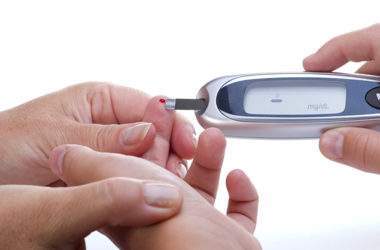According to experts, more than 200 million people all over the world are suffering from osteoporosis. It’s a very common disease of the bone, and a lot of people, most especially those who are well-aware of the repercussions of having osteoporosis, are doing their best today to considerably reduce their risk of having it in the future.
Did you know that osteoporosis is categorized by orthopedic doctors — medical experts in the diagnosis and treatment of injuries, disorders and disease of the musculoskeletal system — into two types?
This article will get you introduced to those two types of osteoporosis, allowing you to get to know more about that bone disease that can strike later on when you are older. Since knowing your enemy is part of the battle, it can be easier to prevent osteoporosis from striking if you know some of the most important matters about it.
Primary and secondary — these are the two types of osteoporosis. One of them has something to do with the process of aging, while the other is linked to the presence of a medical condition or disease.
Primary Osteoporosis
The kind of osteoporosis that most people are aware of is referred to as primary osteoporosis. Simply put, it’s the kind that is brought about by the normal process of aging.
According to doctors, primary osteoporosis can be further divided into two types: primary type I and primary type II
Primary type I osteoporosis is also sometimes referred to as postmenopausal osteoporosis. Just like what the name says, this type of primary osteoporosis mainly affects women, in particular those who have undergone the menopausal stage. Experts say that it all has something to do with hormonal imbalance.
Generally speaking, primary type I osteoporosis affects women 10 to 15 years after entering menopause. Usually, those who are diagnosed with this type of primary osteoporosis are aged 50 to 70 years old.
Primary type II osteoporosis is sometimes termed as senile osteoporosis. Doctors say that its main cause is long-term deficiency in calcium.
Unlike primary type I osteoporosis which is linked to menopause, primary type II osteoporosis can affect both men and women. But still it is women who are at higher risk of developing this type of primary osteoporosis. Doctors add that it is primary type II osteoporosis that can be commonly blamed for hip fractures.
By the way, it’s not just long-term deficiency in calcium that can cause primary type II osteoporosis, but also long-term deficiency in vitamin D, say the experts. Orthopedic doctors explain that calcium and vitamin D work hand in hand in strengthening the bones — vitamin D allows the body to absorb calcium so much better.
Secondary Osteoporosis
Unlike primary osteoporosis, secondary osteoporosis is caused by a medical condition or disease. Just about any health problem that can cause an imbalance between the formation of new bone cells and the loss of old bone cells can be blamed for the development of secondary osteoporosis.
One such problem that can be associated with secondary osteoporosis is hyperparathyroidism, or the hyperactivity of the parathyroid glands. In this, the parathyroid glands produce more parathyroid hormones than necessary, causing hormonal imbalance just like in the case of primary type I osteoporosis or postmenopausal osteoporosis.
Someone who is diagnosed with diabetes is also at high risk of developing secondary osteoporosis one day because having high levels of sugar in the blood can have a negative impact on the bones.
Liver disease, scurvy, leukemia, intestinal malabsorption, thalassemia, multiple myeloma, Cushing’s syndrome — these are some other medical conditions that can cause secondary osteoporosis.
By the way, doctors say that there are certain medications that can contribute to secondary osteoporosis development, too. Some of them include antacids that contain aluminum, anticonvulsants, heparin (an anticoagulant), thyroid hormones and steroids.













